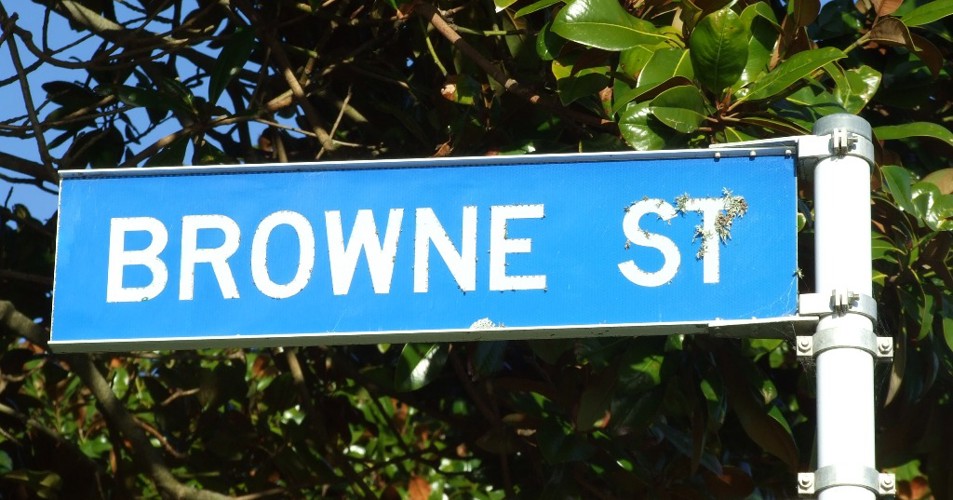 Browne Street sign. Mike Gooch. Word on the Street image collection.
Browne Street sign. Mike Gooch. Word on the Street image collection.
 Browne Street sign. Mike Gooch. Word on the Street image collection.
Browne Street sign. Mike Gooch. Word on the Street image collection.
Browne Street is named after Sir Thomas Gore Browne, Governor of New Zealand from 1855 until 1862. Browne was born on 3rd July 1807 into a military family in Buckingham, England.
In 1824 Browne was commissioned into the 44th Foot Regiment and served in various campaigns, eventually becoming lieutenant-colonel of the 41st Regiment. In 1851 he retired and became governor of St Helena.
Marrying Harriet Campbell in 1854, he was appointed governor of New Zealand to succeed Sir George Grey in the same year. He arrived here in 1855 expecting a relatively quiet job.
However, since Grey's departure in 1853, Māori had become increasingly upset over the dealings of the government land agents under Donald McLean. The majority were vehemently opposed to any land sales. Browne was aware of the pressure from settlers for more land and believed only a few extremist Māori were against selling. In 1859 he announced a policy to treat all Māori fighting on European land as "rebels" and noted he would buy land only from Māori with "undisputed title". He was also quick to point out that he would not tolerate so called non-owners preventing rightful owners from selling.
This paved the way for the infamous deal with Te Teira for the sale of land at the Waitara river mouth against the express wishes of the paramount chief Wiremu Kīngi Te Rangitake and much of Te Ātiawa. His decision was ably assisted by a sham investigation into the rightful owners by Donald McLean and Robert Parris. This, of course, was a significant part of the tensions that erupted into the First Taranaki War of 1860. Browne became ever more vocal about the Māori resistance and even wanted to invade the Waikato in 1861 to punish the tribes who had supported Taranaki resistance.
Fortunately saner voices prevailed and Browne was hastily appointed governor of Tasmania, while Grey returned to be governor of New Zealand.
Browne is now seen as someone who was unsuited to the complexities of governance in a colonial context. He certainly had little understanding of Māori culture. He was awarded a K.C.M.G in 1869 and died in London on 17 April 1887
This story was originally published in the Taranaki Daily News.
Related plan:
Waitara West SO7754, ICS Pre 300,000 Cadastral Plan Index (Imaged by LINZ).
Please do not reproduce these images without permission from Puke Ariki.
Contact us for more information or you can order images online here.